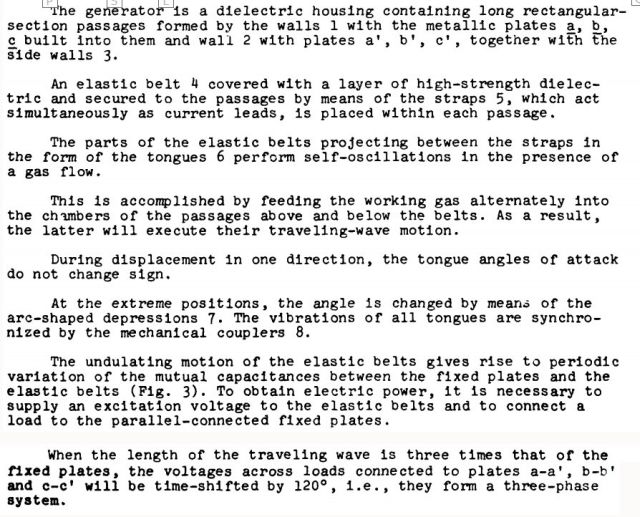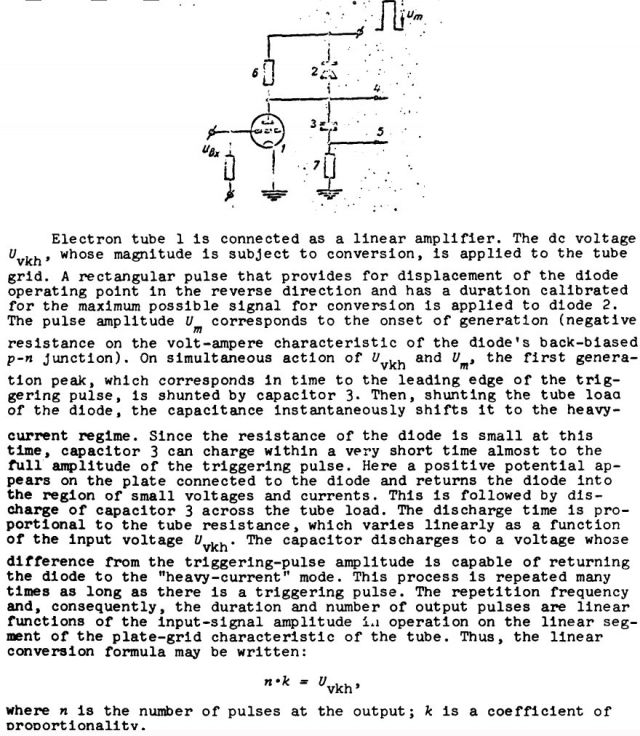Friday, August 18, 2017
Se-lu 4, Soviet edition
In making "improved" versions of Volney's meter, I found that some of my "improvements" led to failure. Turns out that the odd-looking stuff in Volney's ckt wasn't an error, it was an elegant and efficient use of real components. More about that later, after I do more experiments and learn more.
Trying to figure out some of the elegant tricks, I ran into a different form of elegance. I've often talked about superior Soviet science education, using REAL EXPERIENCE with REAL NATURAL PHENOMENA. The Soviet form of Cybernetics followed the same path, letting Nature do part of the design instead of shoehorning Nature into fashionable idiot theories.
This 1967 publication by our Air Force is part of a regular series of reviews, covering and translating Russian technical developments and patents. We obviously didn't learn anything from the reviews because we're incapable of learning.
Two of the items in this PDF are beautifully Natural.
= = = = =
(1) A co-generator for three-phase AC, designed to be inserted into a turbulent gas flow. This would recapture energy from a large smokestack or engine exhaust.
 In other words, it's a cochlea.
= = = = =
(2) A simple analog-to-digital converter with a pulse-rate output.
In other words, it's a cochlea.
= = = = =
(2) A simple analog-to-digital converter with a pulse-rate output.
 In other words, it's a neuron with pulse repetition rate output, like a hair cell or a gamma stretch sensor.
= = = = =
Language sidenote: The USAF translator who wrote this document wasn't named. He truly deserves major credit. Name in lights. We don't have the original Russian, but it's a safe bet that the original was stilted and stiff because it was written by engineers. This document is the BEST technical writing I've ever seen. I've read and written a lot of technical descriptions, and nothing remotely approaches the readability and clarity of this work.
In other words, it's a neuron with pulse repetition rate output, like a hair cell or a gamma stretch sensor.
= = = = =
Language sidenote: The USAF translator who wrote this document wasn't named. He truly deserves major credit. Name in lights. We don't have the original Russian, but it's a safe bet that the original was stilted and stiff because it was written by engineers. This document is the BEST technical writing I've ever seen. I've read and written a lot of technical descriptions, and nothing remotely approaches the readability and clarity of this work.
 In other words, it's a cochlea.
= = = = =
(2) A simple analog-to-digital converter with a pulse-rate output.
In other words, it's a cochlea.
= = = = =
(2) A simple analog-to-digital converter with a pulse-rate output.
 In other words, it's a neuron with pulse repetition rate output, like a hair cell or a gamma stretch sensor.
= = = = =
Language sidenote: The USAF translator who wrote this document wasn't named. He truly deserves major credit. Name in lights. We don't have the original Russian, but it's a safe bet that the original was stilted and stiff because it was written by engineers. This document is the BEST technical writing I've ever seen. I've read and written a lot of technical descriptions, and nothing remotely approaches the readability and clarity of this work.
In other words, it's a neuron with pulse repetition rate output, like a hair cell or a gamma stretch sensor.
= = = = =
Language sidenote: The USAF translator who wrote this document wasn't named. He truly deserves major credit. Name in lights. We don't have the original Russian, but it's a safe bet that the original was stilted and stiff because it was written by engineers. This document is the BEST technical writing I've ever seen. I've read and written a lot of technical descriptions, and nothing remotely approaches the readability and clarity of this work.Labels: Experiential education, se-lu
